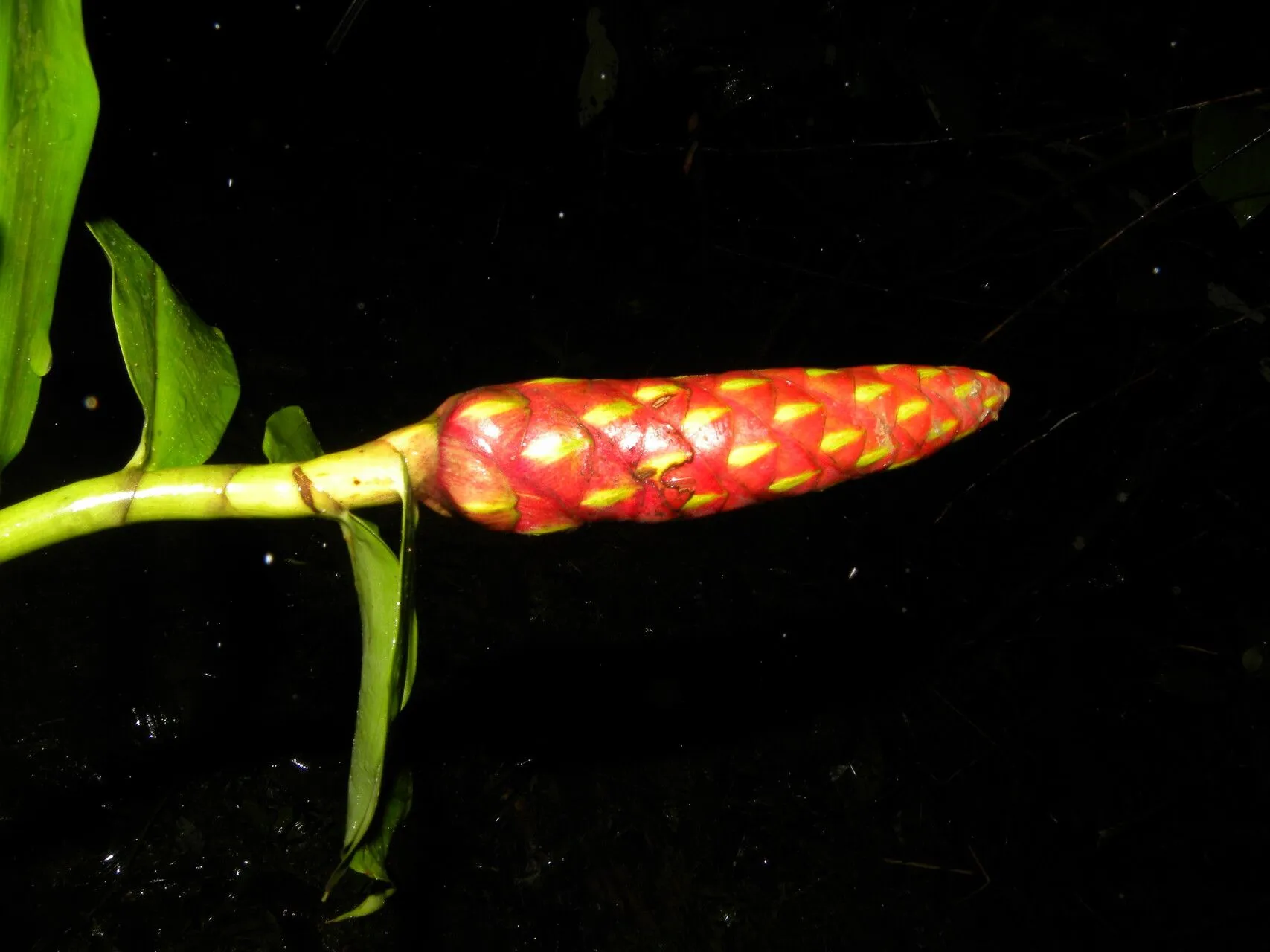
Author: Ruiz & Pav.
Bibliography: Fl. Peruv. 1: 2 (1798)
Year: 1798
Status: accepted
Rank: species
Genus: Costus
Vegetable: False
Observations: Mexico to Trop. America
Congo cane, known scientifically as Costus scaber, is a captivating plant that belongs to the Costaceae family. First documented in the comprehensive botanical reference “Fl. Peruv.” in 1798 by Ruiz and Pavon, this species boasts a rich history and intriguing botanical characteristics.
Native to regions stretching from Mexico down through tropical America, Congo cane thrives in warm, humid environments. It is a perennial herbaceous plant recognized for its striking appearance, which makes it a favored choice among plant enthusiasts and botanists alike.
The plant features lush, green foliage with a unique spiral arrangement that is characteristic of the Costus genus. The leaves are typically large, broad, and oblong with a glossy surface, providing a lush backdrop to its vibrant blooms. Congo cane is perhaps most celebrated for its enchanting flowers, which emerge from cone-shaped bracts. These flowers can vary in color, ranging from vivid reds to oranges, adding a splash of brilliance to the tropical landscape.
In its natural habitat, Costus scaber plays a vital ecological role. It often grows in understory layers of forests, where it helps in maintaining the ecosystem’s balance. The plant can form dense clusters, providing shelter and food for various insects and small wildlife, thus contributing to the overall biodiversity of its native regions.
Congo cane is relatively easy to care for in garden settings, provided it receives the right conditions. It prefers moist, well-draining soil and partial shade to mimic its natural understory environment. Though it can tolerate some direct sunlight, too much can scorch its leaves.
In addition to its ornamental value, Costus scaber has been used in traditional medicine in various cultures. Its roots and stems have been utilized for their purported therapeutic properties, though it is important to consult with knowledgeable sources before attempting any medicinal use.
In summary, Congo cane (Costus scaber) is more than just a plant; it is a botanical marvel that enriches both natural habitats and cultivated gardens through its beauty and ecological significance. Its historical documentation and continued presence from Mexico to tropical America underscore its enduring appeal and biological importance.
Eng: spiral head ginger
En: Congo cane, Spiral head ginger
Fr: Canne congo
Taken Oct 21, 2015 by Víquez Carazo Manuel (cc-by-sa)
Taken Apr 17, 2019 by OTS – D.Solano (cc-by-nc-sa)
Taken Apr 17, 2019 by OTS – D.Solano (cc-by-nc-sa)
Taken Apr 17, 2019 by OTS – D.Solano (cc-by-nc-sa)
Taken Apr 17, 2019 by OTS – D.Solano (cc-by-nc-sa)
Taken Sep 14, 2015 by Nelson Zamora Villalobos (cc-by-nc)
Taken Sep 14, 2015 by Nelson Zamora Villalobos (cc-by-nc)
Taken Sep 14, 2015 by Nelson Zamora Villalobos (cc-by-nc)
Taken Sep 14, 2015 by Nelson Zamora Villalobos (cc-by-nc)
Taken Apr 17, 2019 by OTS – D.Solano (cc-by-nc-sa)
Taken Apr 17, 2019 by OTS – D.Solano (cc-by-nc-sa)
Taken Apr 17, 2019 by OTS – D.Solano (cc-by-nc-sa)
Taken Apr 17, 2019 by OTS – D.Solano (cc-by-nc-sa)
Taken Apr 17, 2019 by OTS – D.Solano (cc-by-nc-sa)
© copyright of the Board of Trustees of the Royal Botanic Gardens, Kew.
© copyright of the Board of Trustees of the Royal Botanic Gardens, Kew.
© copyright of the Board of Trustees of the Royal Botanic Gardens, Kew.
Growth habit>: Forb/herb
Family: Myrtaceae Author: (F.Muell.) K.D.Hill & L.A.S.Johnson Bibliography: Telopea 6: 402 (1995) Year: 1995 Status:…
Family: Rubiaceae Author: Pierre ex A.Froehner Bibliography: Notizbl. Bot. Gart. Berlin-Dahlem 1: 237 (1897) Year:…
Family: Sapindaceae Author: Koidz. Bibliography: J. Coll. Sci. Imp. Univ. Tokyo 32(1): 38 (1911) Year:…
Family: Asteraceae Author: A.Gray Bibliography: Pacif. Railr. Rep.: 107 (1857) Year: 1857 Status: accepted Rank:…
Family: Fabaceae Author: Medik. Bibliography: Vorles. Churpfälz. Phys.-Ökon. Ges. 2: 398 (1787) Year: 1787 Status:…
Family: Aspleniaceae Author: (Cav.) Alston Bibliography: Bull. Misc. Inform. Kew 1932: 309 (1932) Year: 1932…